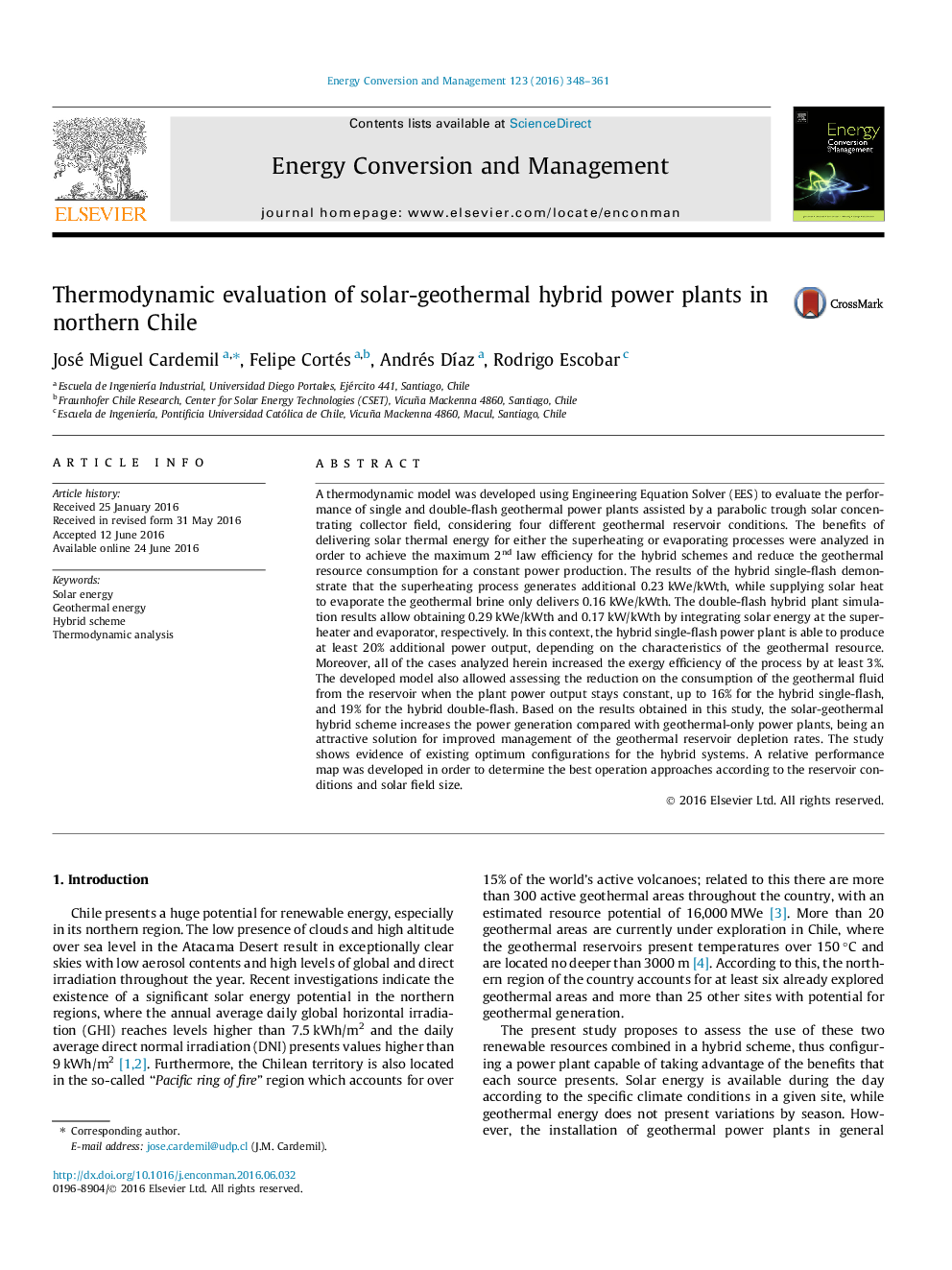| Article ID | Journal | Published Year | Pages | File Type |
|---|---|---|---|---|
| 760155 | Energy Conversion and Management | 2016 | 14 Pages |
•Thermodynamic evaluation of geothermal-solar hybrid systems.•A multi-parameter analysis for different cycle configurations.•Performance comparison between two operation modes.•Overview of the technical applicability of the hybridization.
A thermodynamic model was developed using Engineering Equation Solver (EES) to evaluate the performance of single and double-flash geothermal power plants assisted by a parabolic trough solar concentrating collector field, considering four different geothermal reservoir conditions. The benefits of delivering solar thermal energy for either the superheating or evaporating processes were analyzed in order to achieve the maximum 2nd law efficiency for the hybrid schemes and reduce the geothermal resource consumption for a constant power production. The results of the hybrid single-flash demonstrate that the superheating process generates additional 0.23 kWe/kWth, while supplying solar heat to evaporate the geothermal brine only delivers 0.16 kWe/kWth. The double-flash hybrid plant simulation results allow obtaining 0.29 kWe/kWth and 0.17 kW/kWth by integrating solar energy at the superheater and evaporator, respectively. In this context, the hybrid single-flash power plant is able to produce at least 20% additional power output, depending on the characteristics of the geothermal resource. Moreover, all of the cases analyzed herein increased the exergy efficiency of the process by at least 3%. The developed model also allowed assessing the reduction on the consumption of the geothermal fluid from the reservoir when the plant power output stays constant, up to 16% for the hybrid single-flash, and 19% for the hybrid double-flash. Based on the results obtained in this study, the solar-geothermal hybrid scheme increases the power generation compared with geothermal-only power plants, being an attractive solution for improved management of the geothermal reservoir depletion rates. The study shows evidence of existing optimum configurations for the hybrid systems. A relative performance map was developed in order to determine the best operation approaches according to the reservoir conditions and solar field size.
